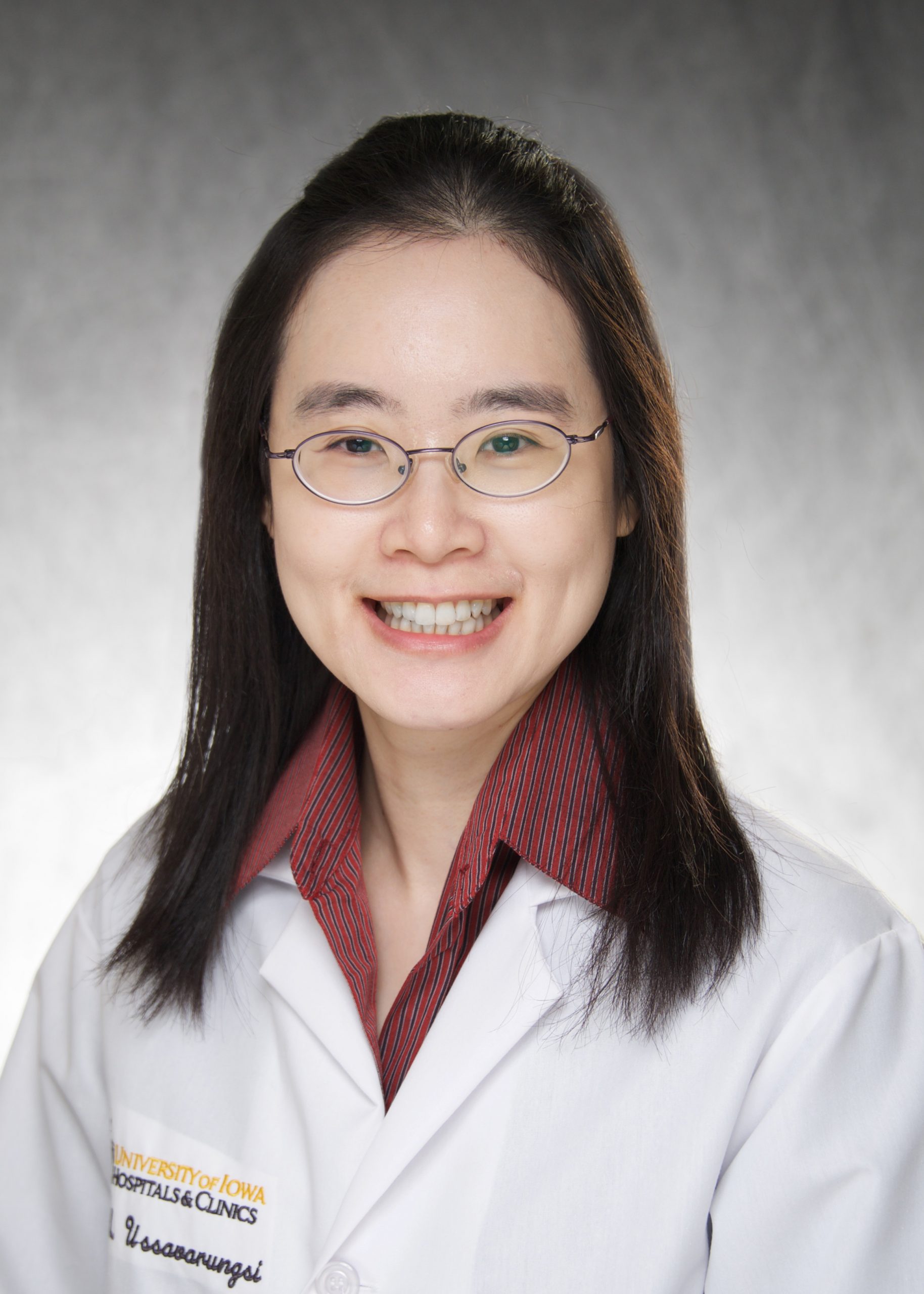Imagine landing a job in a foreign country that you have seen once briefly. You move there with little idea about how anything works, from public transportation to grocery shopping to all the million daily tasks residents handle practically unconsciously. But the opportunity to rapidly grow in the work you have loved all your life is too amazing to pass up. This leap of faith is exactly what many members of the Department of Internal Medicine do all the time. One member in particular, Dr. Silvie Kremserová, just made that leap in March of this year, joining the department as a Postdoctoral Research Fellow.
Dr. Kremserová was born and raised in a small village in the northeast of the Czech Republic. Her post-secondary career was spent at Masaryk University in Brno, the country’s second largest city, situated near the Austrian and Slovakian borders. When she arrived at Masaryk University, she already knew that she would study biochemistry. “In high school, I loved chemistry and biology because I had a teacher who knew how to inspire students. Biochemistry hooks up both of them. Biochemical processes give rise to the complexity of life. It’s exciting.”
While working on her undergraduate degree, Dr. Kremserová discovered a taste for working in a lab. “Every day is different; I love the feeling after you finish an experiment and compare your expectations to your data.” When many would hope to have their expectations confirmed, Dr. Kremserová relishes the surprise, the unexpected data that sends her back to the bench, “thinking about new options to describe a problem.” She also learned to rely on her colleagues and the available literature when she hits a roadblock. “I proceed from the simple to the complex, and try to look at the problem in context. It’s more important, though, to speak with colleagues because they can have a different eye.”
Dr. Kremserová’s graduate work at Masaryk University focused on myeloperoxidase, the ways in which it binds to erythrocytes and its role in vascular inflammation, the latter of which was the focus of her PhD. As she neared the completion of that work, she began to look at postdoctoral programs in the United States. But it was when she presented her work at a conference in Cologne that her path crossed with that of Dr. William Nauseef, Director of the Inflammation Program and Professor of Infectious Diseases and Microbiology at the University of Iowa. “I was immediately impressed by the quality of her data, the rigor of her analysis, and the clarity of her presentation,” Dr. Nauseef says. The choice for Dr. Kremserová was easy too: “It was my first application for a postdoctoral position.” The work in his lab was in line with her long-term focus, and they are “bringing key findings in the neutrophil field.”
 Her work in the Nauseef Lab, she goes on to explain, is focused on neutrophil cell death after S. aureus ingestion. Human neutrophils are crucial cells in the body’s fight against infection. But when it comes to staph infections, particularly the methicillin-resistant variant (more commonly known as MRSA), 20 to 50 percent of the bacteria can remain viable and cause neutrophil lysis even after treatment with antibiotics. This has dramatic consequences for people infected with this strain as the immune system struggles to overcome it. Dr. Kremserová is working to identify what happens at a molecular level that causes the neutrophil cell death. “There is a major knowledge gap,” she says, “in our current understanding of host defense against S. aureus.”
Her work in the Nauseef Lab, she goes on to explain, is focused on neutrophil cell death after S. aureus ingestion. Human neutrophils are crucial cells in the body’s fight against infection. But when it comes to staph infections, particularly the methicillin-resistant variant (more commonly known as MRSA), 20 to 50 percent of the bacteria can remain viable and cause neutrophil lysis even after treatment with antibiotics. This has dramatic consequences for people infected with this strain as the immune system struggles to overcome it. Dr. Kremserová is working to identify what happens at a molecular level that causes the neutrophil cell death. “There is a major knowledge gap,” she says, “in our current understanding of host defense against S. aureus.”
Dr. Mallary Wacker, a former colleague and now faculty member at Central Michigan University, worked alongside Dr. Kremserová up until just a few weeks ago when she completed her own fellowship. Dr. Wacker calls her “an incredible scientist and colleague.” She cites the speed and ease with which Dr. Kremserová got right to work, and what “a real pleasure” working with her was. “For example, in Silvie’s first four months she learned the necessary technical skills for her project. . . . She optimized new assays, including dose response curves for kinase inhibitors, and made significant contributions to a new manuscript. . . . Silvie designed carefully controlled experiments as if she was a long-time expert in the field.”
When not isolating neutrophils or preparing viability determination assays, Dr. Kremserová and her husband Chris enjoy the work of adapting to Iowa life. “Our first month was challenging; we were without a car and bikes. Getting anywhere took a bit of time.” They’ve since gotten bicycles, passed their driving tests, and bought a car. Even getting used to the banking system took some adjustment. “I paid by check for the first time in my life,” she says with a smile. Life in Iowa City appeals to her. “I like that it is a relatively small town, but everything that you need can be found here.” Dr. Kremserová and her husband enjoy access to a nearby park and pool, and even have begun to make some trips out of the area, exploring the region we are lucky that they will call home for the next few years.


One comment on “August 2016: Silvie Kremserová”